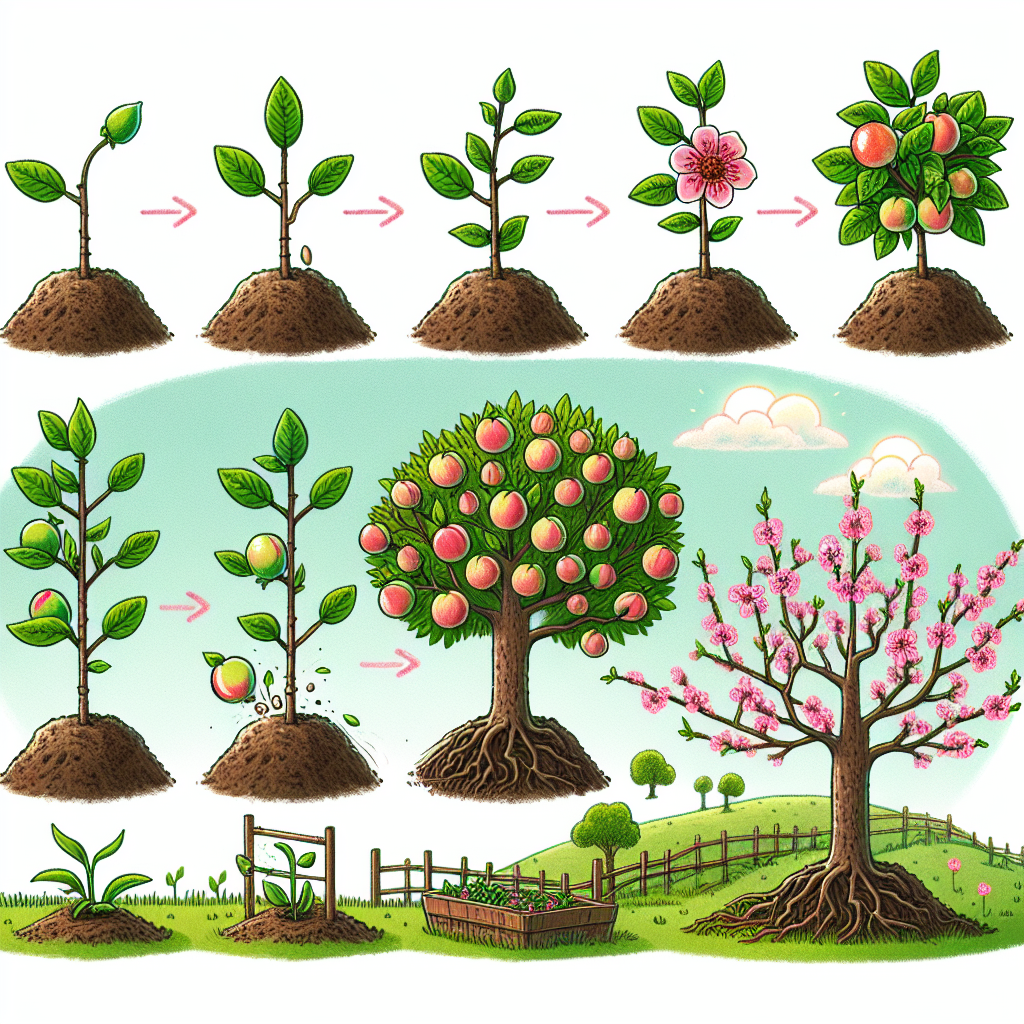
How to grow a peach
How to Grow a Peach: A Comprehensive Guide for Beginners
If you've ever tasted a juicy, sun-ripened peach, you know the delight they bring. Growing your own peaches can be a rewarding experience, allowing you to harvest fruit at its freshest. In this article, we’ll delve into the essential steps on how to grow a peach, from selecting the right variety to ensuring that your trees thrive in your garden.
Choosing the Right Variety
When you're considering how to grow a peach tree, it all starts with choosing the right variety. Peaches come in two main types: **freestone** and **clingstone**. Freestone peaches have flesh that separates easily from the pit, whereas clingstone peaches adhere to the pit. Furthermore, peach varieties can also be classified based on their chilling hour requirements and skin color. Here are some popular options:
- Elberta: A classic yellow freestone peach, juicy and sweet, great for canning.
- Redhaven: An early-season freestone variety with vibrant red skin.
- Donut Peach: This intriguing variety has a flat shape and sweet, aromatic flesh.
- Florida Prince: Ideal for warmer climates, producing fruit early in the season.
Site Selection and Soil Preparation
Peach trees thrive in well-drained soil with plenty of sunlight. When deciding where to plant, consider the following factors:
- Sunlight: Choose a location that receives at least 6-8 hours of direct sunlight daily.
- Soil: Sandy loam is ideal for peach trees, but they can adapt to clay soils if well-drained.
- Space: Ensure ample room for growth, as peach trees can reach 15-20 feet in height and width.
Before planting, prepare the soil by testing its pH. Peach trees prefer a slightly acidic to neutral pH level of 6.0 to 7.0. Amend the soil with organic matter such as compost to improve its structure and drainage.
Planting Your Peach Tree
Once you've selected the right variety and prepared your soil, it’s time to plant. Follow these steps for successful planting:
- Timing: The best time to plant peach trees is in late winter or early spring before new growth begins.
- Digging a Hole: Create a hole about twice as wide and the same depth as the root ball of the tree.
- Positioning: Place the tree in the hole, ensuring that the graft union (swelling on the trunk where the tree was grafted) is exposed above ground level.
- Backfilling: Fill the hole with soil and water thoroughly to remove any air pockets.
- Watering: Establish a regular watering schedule, especially during dry spells.
Watering and Fertilization
Proper watering is crucial for peach tree health. Young trees need more frequent watering than established ones. Here are some guidelines:
- Water deeply once a week, particularly during summer heat.
- Mulch the base of the tree to retain moisture and regulate soil temperature.
Fertilization is also essential for peach trees, especially in their first few years. Use a balanced fertilizer, following directions based on the tree's age and soil test results. A good starting point can be:
| Tree Age | Recommended Fertilizer Amount | Timing |
|---|---|---|
| 1 Year | 1/2 cup | Early Spring |
| 2-3 Years | 1 cup | Early Spring |
| 4+ Years | 2 cups | Early Spring |
Pest and Disease Management
Keeping your peach trees healthy involves being proactive against pests and diseases. Here are common threats and management strategies:
- Peach Leaf Curl: A fungal disease that causes leaves to curl. Prevent it by applying fungicides in late winter.
- Brown Rot: Affects fruit, causing rot. Maintain cleanliness around the tree and remove all infected fruit.
- Peach Tree Borer: Larvae can damage the tree. Use insecticides as needed and keep the trunk free of wounds.
"Growing peaches is not just about enjoying their taste; it's also about nurturing them through their growth journey." - Gardening Expert
Pruning Your Peach Tree
Pruning is vital for peach tree health, shaping, and fruit production. Proper techniques include:
- Timing: The best time to prune is in late winter or early spring, before new growth begins.
- Removing Suckers: These grow at the base of the tree and take energy away from fruit production.
- Shaping: Aim for an open center structure to allow sunlight and air circulation.
Harvesting Your Peaches
The culmination of your efforts comes when it's time to harvest. Peaches are typically ready when they have developed a vibrant color and yield to gentle pressure. Here are tips for harvesting:
- Pick peaches by twisting them gently off the tree; avoid pulling hard, which can damage the fruit and the tree.
- Store harvested peaches in a cool place and consume them within a week for the best flavor.
Common Mistakes to Avoid
As you embark on your journey to grow peaches, be mindful of these common pitfalls:
- **Overwatering:** Excess water can lead to root rot.
- **Neglecting Pruning:** Failure to prune can lead to reduced fruit quality and size.
- **Ignoring Soil Health:** Regular soil testing ensures optimal nutrient levels.
Understanding these aspects will not only make your journey more fruitful but also more enjoyable.
Conclusion
Growing peaches can be a fantastic addition to your gardening endeavors. With the right care, attention, and dedication, you can enjoy bountiful harvests of delicious fruit year after year. Follow the advice in this guide for effective practices on how to grow a peach tree, ensuring that your sweet, juicy treats are just a season away!
```By Guest, Published on October 22nd, 2024